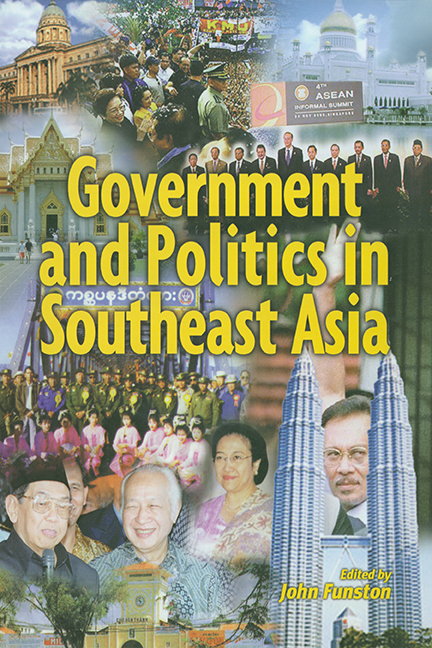10 - VIETNAM
Doi Moi Difficulties
Published online by Cambridge University Press: 21 October 2015
Summary
INTRODUCTION
As the region's first communist state, Vietnam has followed a different political trajectory from Southeast Asian neighbours. That path has been complicated by almost five decades of warfare, on its own territory until 1975 (and again briefly in 1979) then in Cambodia from the end of 1978. A glorious victory over the might of United States-led forces, then an ambiguous stalemate in Cambodia, has been followed by several setbacks in efforts to “win the peace” since the late 1980s.
Ho Chi Minh declared Vietnam's independence in September 1945, but failed to receive recognition from the international community. War between Ho's Democratic Republic of Vietnam (DRV) and France followed, and lasted until the French defeat at the battle of Dien Bien Phu in 1954. The subsequent Geneva Conference temporarily divided Vietnam into two military regroupment zones at the seventeenth parallel and endorsed a reunification of the two Vietnams through a general election in 1956. However, the United States, motivated by Cold War fears of communism, moved to support a separate southern state under the leadership of Ngo Dinh Diem. That maintained Vietnam's partition until the fall of Saigon in 1975. The DRV followed a socialist model of development, and after reunification this model was imposed on the newly-liberated South. The economic crisis that followed forced the leadership to implement reform measures which culminated in the official endorsement of the policy of doi moi (renewal) at the Sixth National Party Congress of the Vietnamese Communist Party (VCP) in 1986.
- Type
- Chapter
- Information
- Government and Politics in Southeast Asia , pp. 372 - 410Publisher: ISEAS–Yusof Ishak InstitutePrint publication year: 2001



